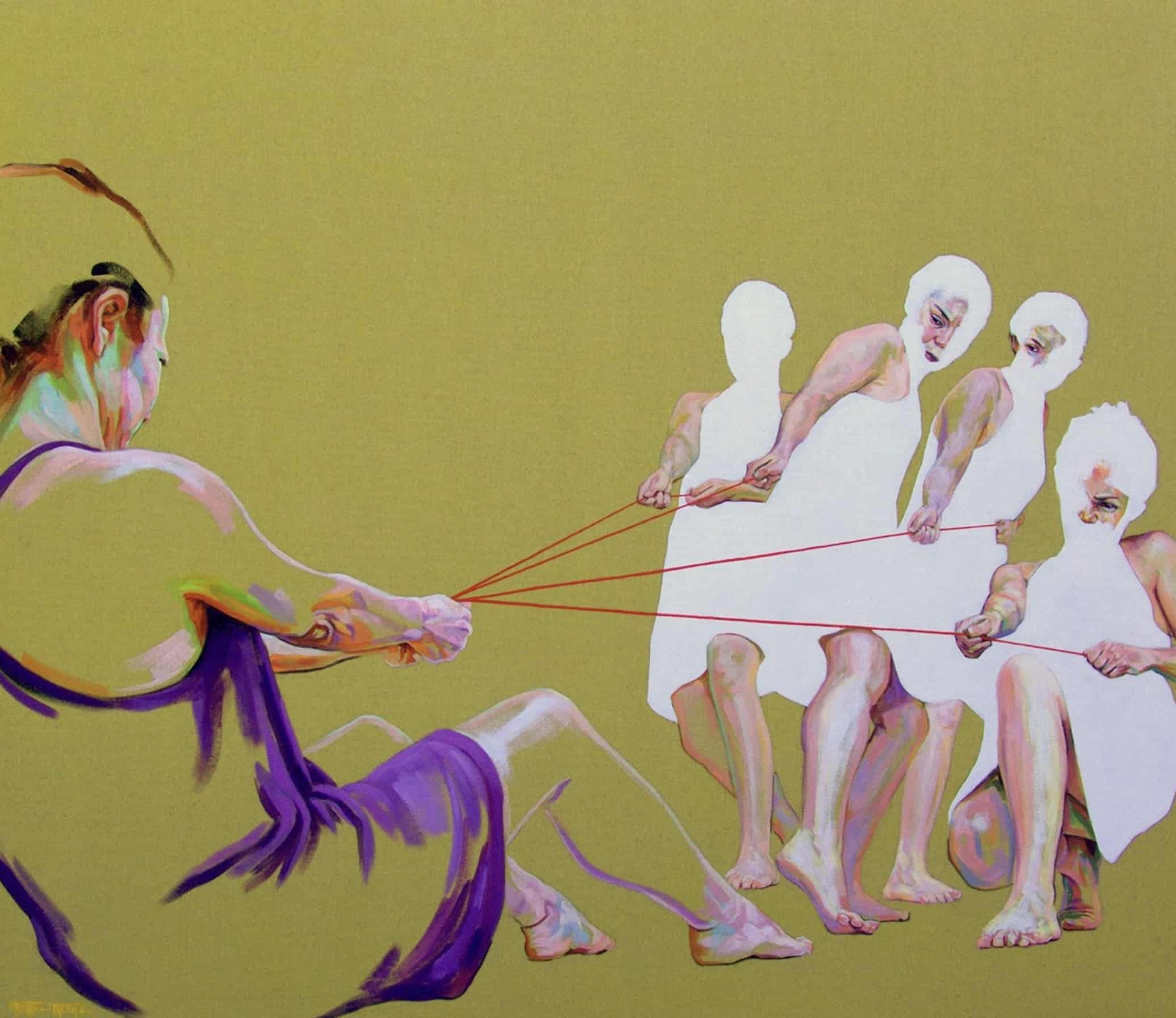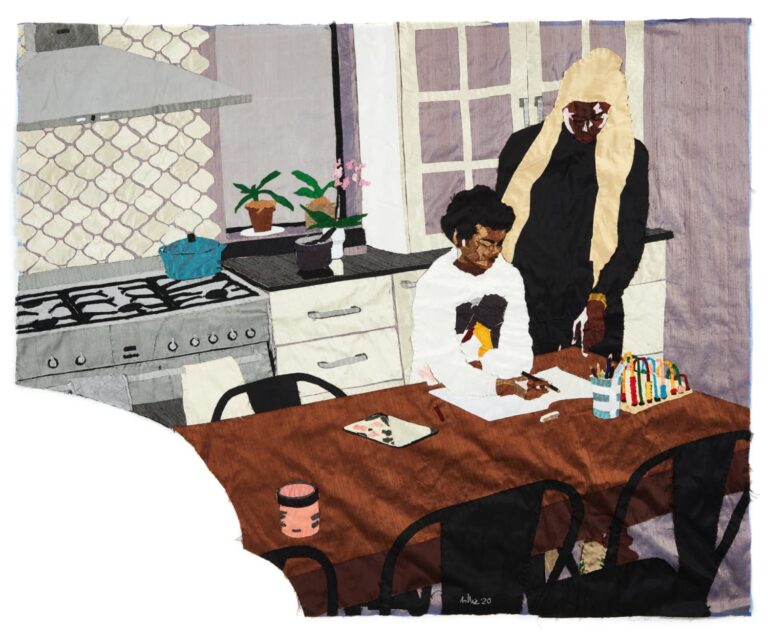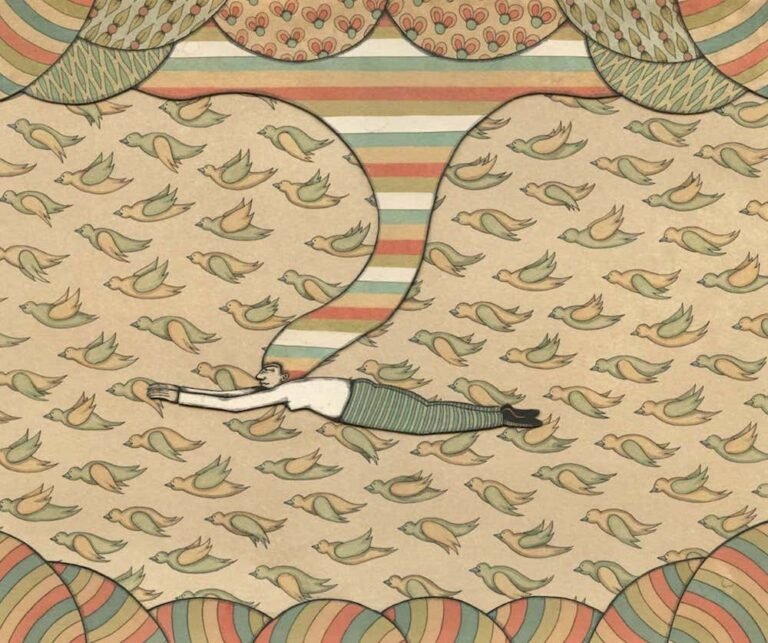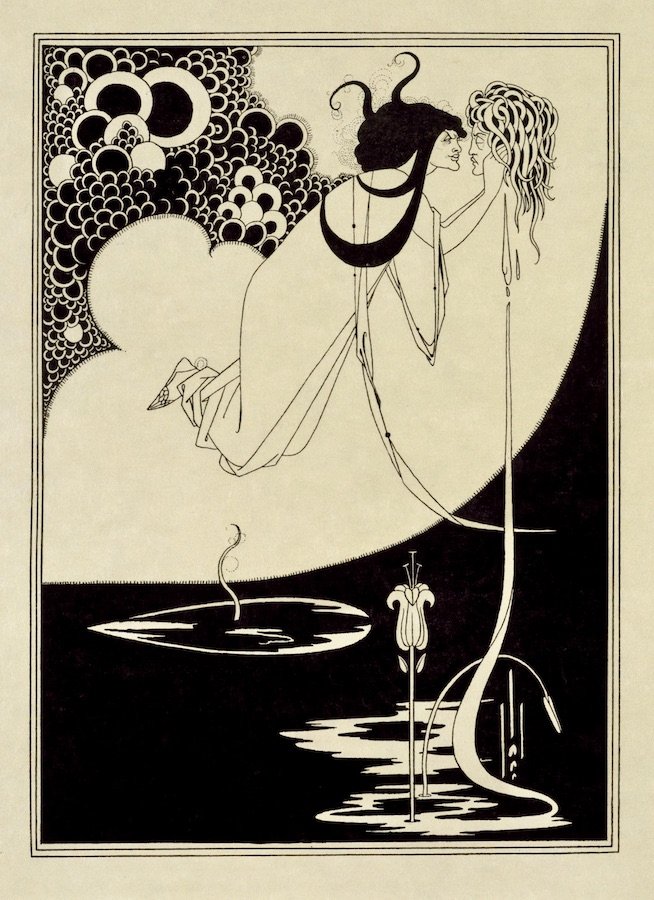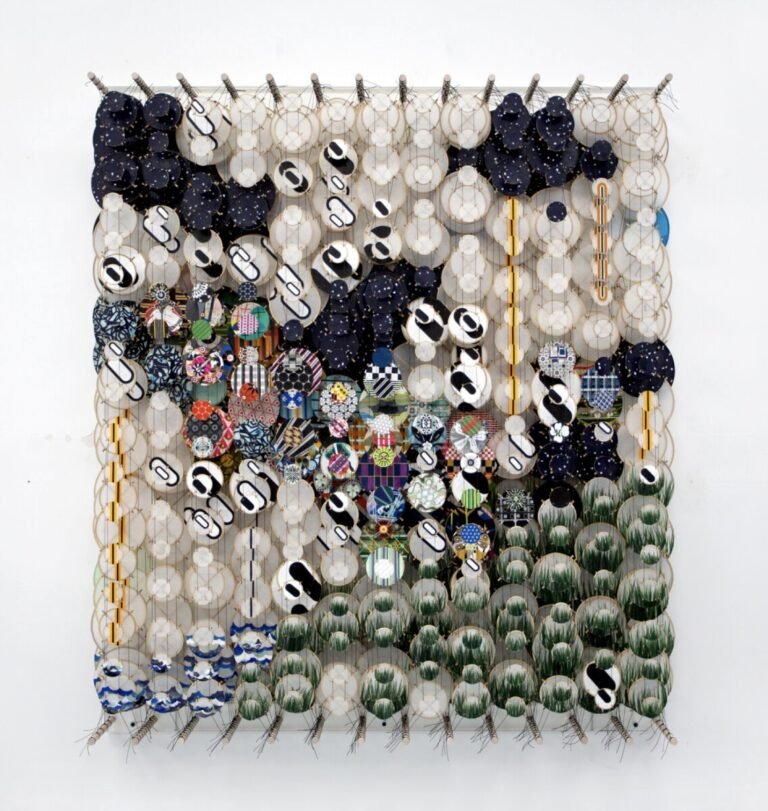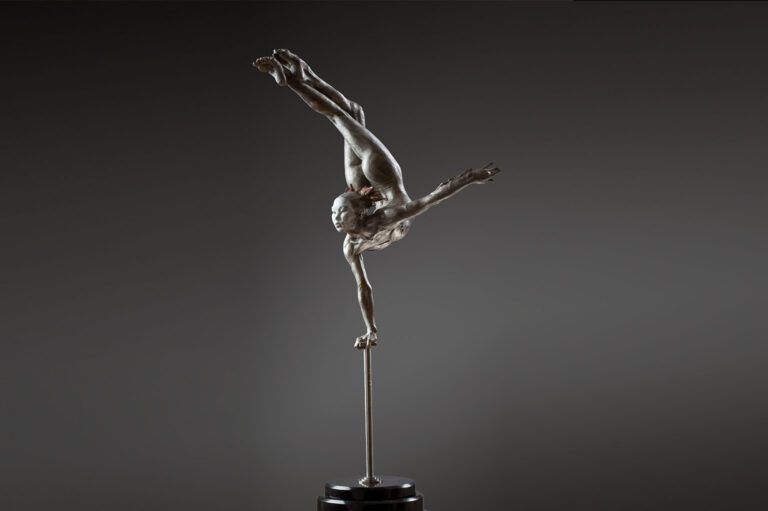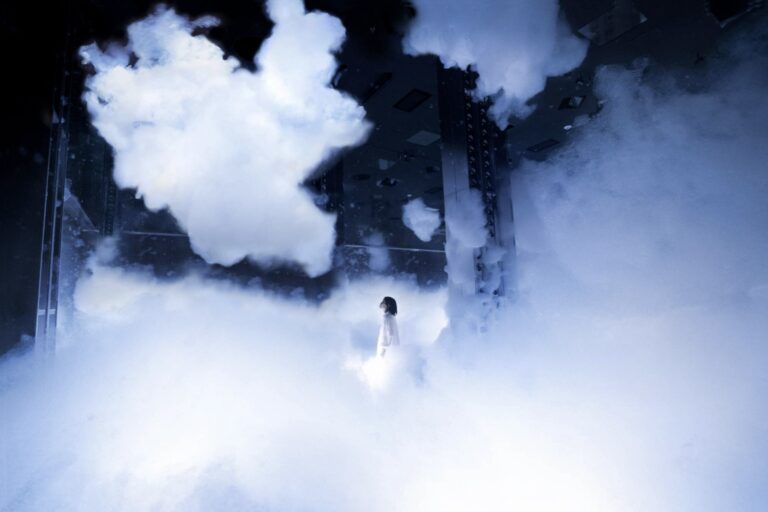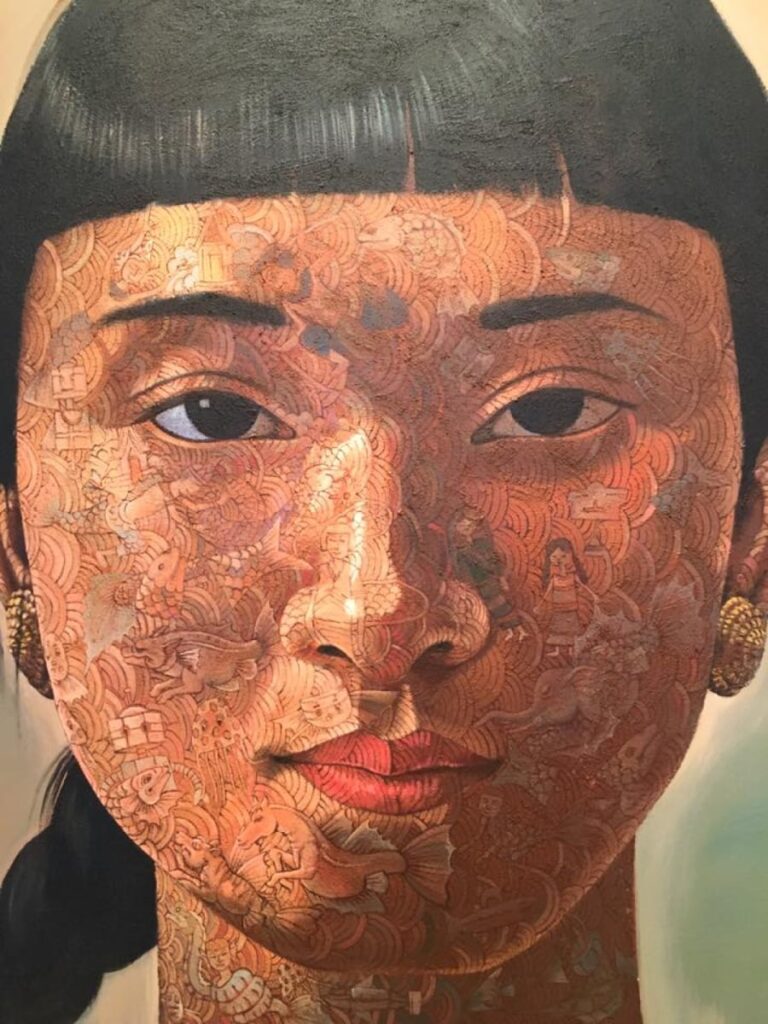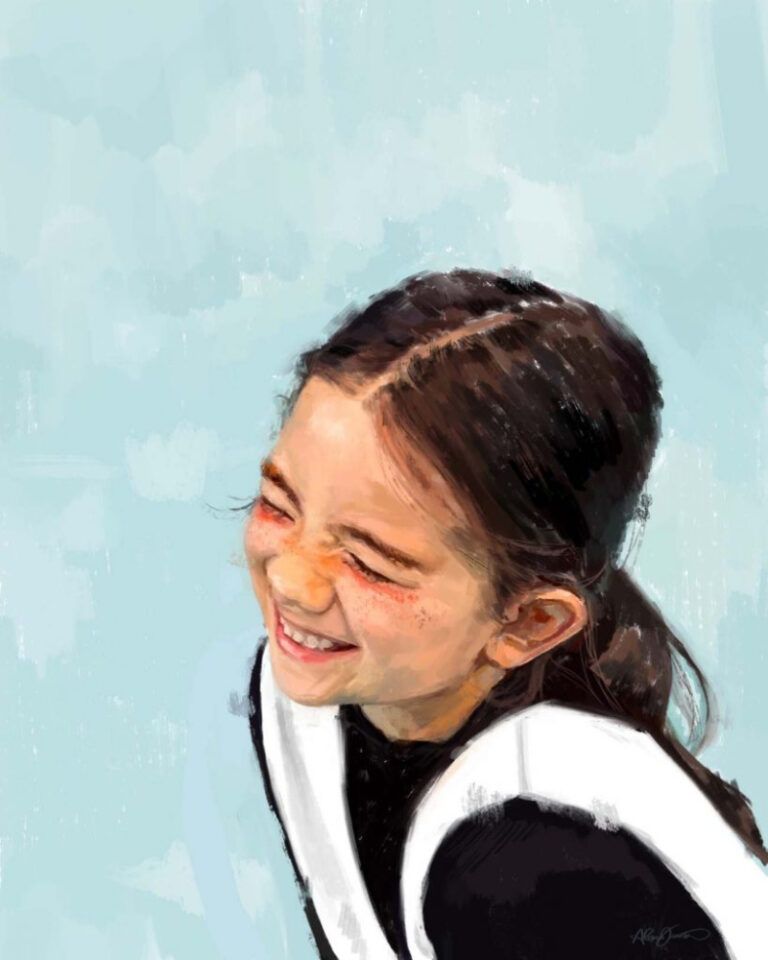In Cristina Troufa’s paintings no picture is the same, but the model is, with Troufa having created a series of self-portraits, her figure shown either in isolation or in companionship with a handful of other selves. Although the multiple selves of the artist are not just mere reflections, but are shown to have their own personality, thoughts, and actions; to cast doubt, to attack, to help, or to just stand witness, their presence and reasoning known only to Troufa, leaving the viewer to see and question what the meaning could be. In this way, whether intended or not, the viewer can reflect on themselves in the picture; assess their own assumptions about what the paintings reveal and in doing so learn a bit about themselves.
Troufa makes full use of the space around the “model” – there’s no bold distraction, no pull from the images focal point, and more importantly it removes a placement of time, allowing the spotlight to remain purely on Troufa’s psychological exploration. Even when there are multiple selves at play, if one of them is intended to be the centre of attention, then the faces of the others are half complete or distanced by perspective – Troufa effortlessly composing the pictures to have the eye drawn straight onto the focus, while being aesthetically balanced.
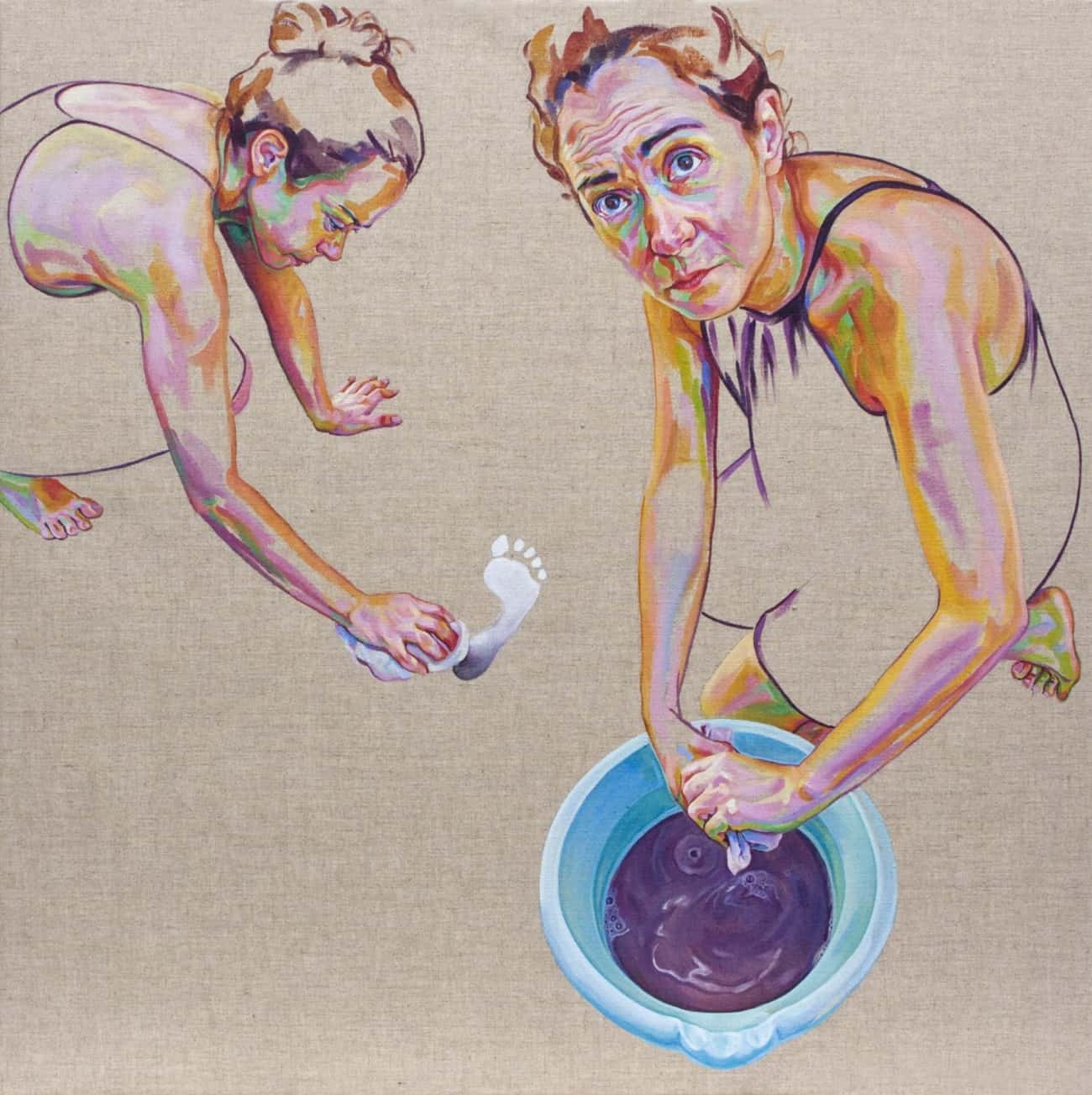 Footprint, 2016, Acrylic on Linen. Cristina Troufa.
Footprint, 2016, Acrylic on Linen. Cristina Troufa.
Image is courtesy of Zet Gallery.
In producing these self-portraits, Troufa works out the positioning and message of her pose before taking the photograph and working from the still. But nothing is lost in transferring the posed photograph onto the canvas. If anything, between the exchange of mediums it’s as if something is added when looking at the countenance; perhaps it’s that Troufa discovers more of what was being portrayed and heightens this or plays with the question of it. The details of each emotion and transfer of feelings are clear from a lifted eyebrow, a furrowed forehead, or the wide opening of eyes, each emphasising their show of empathy, disgust, hate and love.
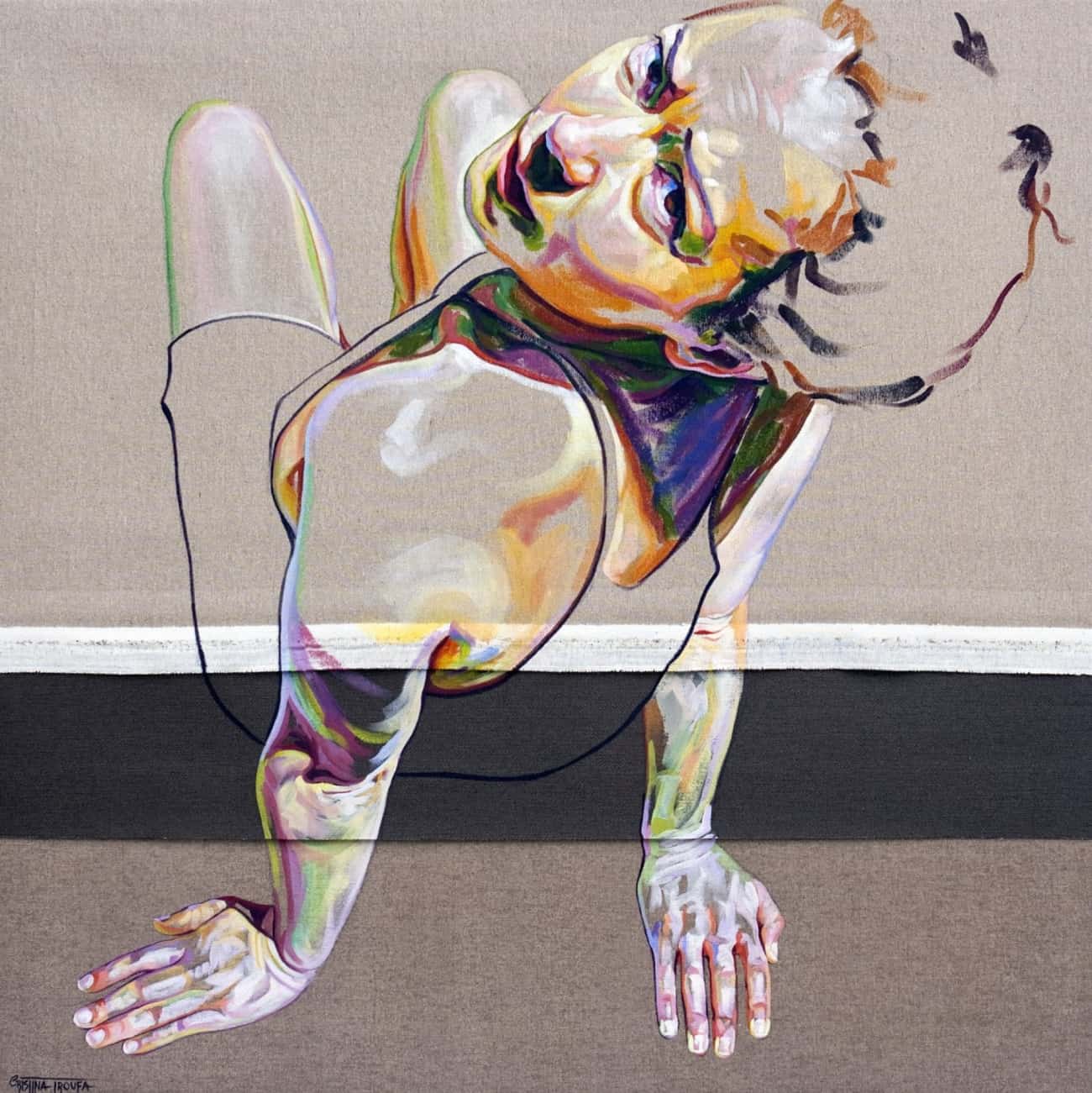 Voyeur #4, 2016, Acrylic on Canvas. Cristina Troufa.
Voyeur #4, 2016, Acrylic on Canvas. Cristina Troufa.
Image is courtesy of Zet Gallery.
The scenes shown in Troufa’s art display a myriad of situations, whether in thought, action or in hinting at the setting, while objects when chosen reveal a glimpse of possibilities that are symbolically intriguing. The paintings provide visual workings of the artist’s self-reflection, looking at her life in captured moments, analysing them to then showing the multiple sides of self through inner-dialogue, and exploration of emotions and spirituality – questioning the journey of life and its continuation after death.
The clothing in Troufa’s art is regularly left unfilled with only hints of the fabric and its colour at the edges, with the majority of it being the same as the background – to be invisible – and in doing so takes away a covering that the clothes give. For fashion choices can make people assume something about you or conceal what you don’t want people to see. By Troufa removing this detail you focus more on the expressions and movements of the body, and see behind it, a deeper depth.

